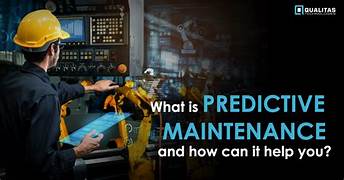Predictive Analytics for Urban Infrastructure Maintenance
Urban infrastructure forms the backbone of cities, supporting everything from transportation systems to utilities, public buildings, and more. However, with the rapid growth of urban populations and the aging of infrastructure, managing and maintaining these systems effectively has become a growing challenge. Traditional methods of maintenance—based on reactive responses to failures or scheduled checkups—are often inefficient, costly, and prone to disruptions. In contrast, predictive analytics has emerged as a powerful tool to enhance urban infrastructure maintenance by enabling data-driven decision-making that can anticipate issues before they occur.
This article explores the role of predictive analytics in urban infrastructure maintenance, its benefits, challenges, and potential to transform the future of urban planning and management.
Understanding Predictive Analytics in Urban Infrastructure
Predictive analytics involves using data, statistical algorithms, and machine learning techniques to identify the likelihood of future outcomes based on historical data. In the context of urban infrastructure maintenance, predictive analytics leverages sensors, data from past incidents, and real-time monitoring to forecast when and where infrastructure components are likely to fail or require maintenance. This allows cities to take proactive measures, schedule maintenance activities more efficiently, and optimize the use of resources.
The goal of predictive analytics in urban infrastructure is to move from a reactive maintenance approach—where repairs are only made after problems arise—to a more efficient and cost-effective predictive maintenance approach, where problems are anticipated and addressed before they escalate.
Key Areas Where Predictive Analytics Is Transforming Urban Infrastructure Maintenance
Predictive analytics is applicable to various components of urban infrastructure, including transportation systems, utilities, public buildings, and more. Below are some of the critical areas where predictive analytics is having a profound impact:
1. Road and Bridge Maintenance
Roads and bridges are essential for urban mobility, yet they are prone to wear and tear due to constant usage, weather conditions, and aging materials. Predictive analytics can be used to monitor the condition of roads and bridges by analyzing data from sensors embedded in the infrastructure, traffic patterns, weather data, and historical maintenance records. AI-driven models can predict when a bridge or a stretch of road is likely to experience a failure, allowing cities to schedule maintenance or repairs in advance, preventing accidents and costly repairs down the line.
- Example: A city can install sensors on bridges to measure stress and load levels, which, when analyzed, can indicate potential fatigue in the structure. This information can trigger a maintenance schedule before the bridge becomes unsafe.
2. Water and Wastewater Systems
Water and wastewater systems are vital components of urban infrastructure, yet they often face issues related to leaks, blockages, and inefficiencies. Predictive analytics can help cities detect and address problems such as leaks, pressure fluctuations, and pipe failures early. By using data from flow meters, pressure sensors, and historical patterns, predictive models can identify areas of the system that are at high risk of failure. This helps optimize maintenance schedules, reduce water loss, and prevent contamination.
- Example: Using real-time monitoring data from sensors in the water system, cities can predict leaks before they lead to system-wide failures, thereby reducing repair costs and improving water conservation.
3. Electricity Grid and Power Distribution
Electricity grids are highly complex systems that require constant monitoring to ensure a reliable supply of power to urban populations. Predictive analytics can be applied to power distribution networks to identify potential failures, optimize load distribution, and improve grid stability. Data from smart meters, weather patterns, and equipment status can help predict areas where failures are likely to occur, enabling utility companies to act in advance to prevent outages.
- Example: During high-demand periods, predictive analytics can help optimize grid performance by predicting voltage fluctuations and redistributing power in real-time to prevent blackouts.
4. Public Transit Systems
Urban transit systems are central to the movement of people within a city, and their efficiency is directly tied to the city’s overall functionality. Predictive analytics can improve the maintenance of buses, trains, and metro systems by analyzing data from onboard sensors, historical performance data, and operational trends. By identifying patterns of wear and tear on vehicles and infrastructure, predictive maintenance can help ensure that public transit services are reliable, reducing disruptions and delays.
- Example: Predictive models can analyze data from trains to forecast the wear on components such as brakes or engines, enabling timely maintenance to prevent breakdowns and improve service continuity.
5. Building and Facility Maintenance
Public buildings, including schools, government offices, and healthcare facilities, require ongoing maintenance to ensure safety and functionality. Predictive analytics can optimize the scheduling of maintenance activities for HVAC systems, elevators, lighting, and other critical building components. By monitoring usage patterns and system performance, predictive maintenance can flag areas that need attention, allowing facility managers to perform maintenance before issues disrupt the building’s operations.
- Example: Sensors monitoring the temperature, humidity, and air quality in a hospital building can predict when HVAC systems are likely to fail, preventing a breakdown that could affect patient comfort and safety.
Benefits of Predictive Analytics for Urban Infrastructure
1. Cost Savings
One of the most significant advantages of predictive analytics is the potential for substantial cost savings. By identifying maintenance needs before they result in major failures, cities can avoid costly emergency repairs, reduce downtime, and extend the lifespan of infrastructure. This results in more efficient resource allocation and a reduction in maintenance costs.
2. Improved Safety
Proactive maintenance reduces the risk of sudden infrastructure failures that could result in accidents or injuries. Predictive analytics enables cities to address issues like deteriorating roads, faulty power lines, or overburdened sewage systems before they pose a safety risk to the public.
3. Reduced Downtime
Predictive maintenance ensures that infrastructure components are serviced before failure occurs, minimizing downtime. This is particularly critical in systems like public transportation, electricity grids, and water supply systems, where interruptions can significantly disrupt daily life.
4. Sustainability
Predictive analytics can contribute to sustainability efforts by reducing waste and optimizing resource use. For example, water leak detection prevents the wastage of water, and optimized energy management reduces power consumption and lowers emissions.
5. Better Resource Allocation
With predictive analytics, cities can allocate resources more effectively. Maintenance schedules can be optimized to ensure that labor, materials, and equipment are used where they are most needed, avoiding over or underutilization.
Challenges of Implementing Predictive Analytics in Urban Infrastructure
While the benefits of predictive analytics for urban infrastructure maintenance are clear, there are several challenges that cities must overcome to implement these systems effectively:
1. Data Quality and Availability
Predictive analytics relies heavily on high-quality data from various sources, including sensors, historical records, and real-time monitoring systems. The availability and accuracy of this data are crucial to building reliable predictive models. In some cases, data may be incomplete or outdated, which can affect the performance of predictive maintenance systems.
2. High Initial Costs
Implementing predictive analytics systems requires significant investment in technology, sensors, data infrastructure, and skilled personnel. While the long-term savings from predictive maintenance may offset these costs, many cities, especially those with limited budgets, may struggle to invest in these advanced systems.
3. Integration with Existing Systems
Urban infrastructure is often composed of legacy systems that may not be compatible with modern predictive analytics tools. Integrating these systems can be complex and time-consuming, requiring significant effort and coordination between various departments and stakeholders.
4. Cybersecurity and Privacy
The adoption of predictive analytics systems involves collecting and analyzing vast amounts of data, which raises concerns about cybersecurity and privacy. Protecting sensitive data from breaches is a critical consideration, particularly when dealing with public infrastructure.
The Future of Predictive Analytics in Urban Infrastructure Maintenance
As cities continue to grow and urban infrastructure becomes more complex, predictive analytics will play an increasingly important role in ensuring efficient and sustainable urban management. The future of predictive analytics in urban infrastructure will likely see:
- Increased Integration: Predictive analytics will be integrated into more urban systems, creating a seamless, data-driven approach to urban management.
- Advanced AI and Machine Learning: As AI and machine learning technologies advance, predictive models will become even more accurate, leading to more precise maintenance schedules and reduced costs.
- Smart Cities: The rise of smart cities, where infrastructure is interconnected and monitored in real-time, will make predictive analytics a standard tool for managing urban environments.
Conclusion
Predictive analytics is revolutionizing urban infrastructure maintenance by offering a more proactive, data-driven approach to managing the vital systems that keep cities functioning. From roadways and bridges to water systems and public transit, predictive analytics allows cities to anticipate maintenance needs, reduce costs, improve safety, and enhance efficiency. While challenges like data quality, cost, and integration remain, the benefits far outweigh these hurdles, and the future of urban infrastructure management is bright with the promise of predictive analytics. As cities continue to evolve, the role of predictive analytics in maintaining infrastructure will only grow, making urban areas smarter, safer, and more sustainable.


